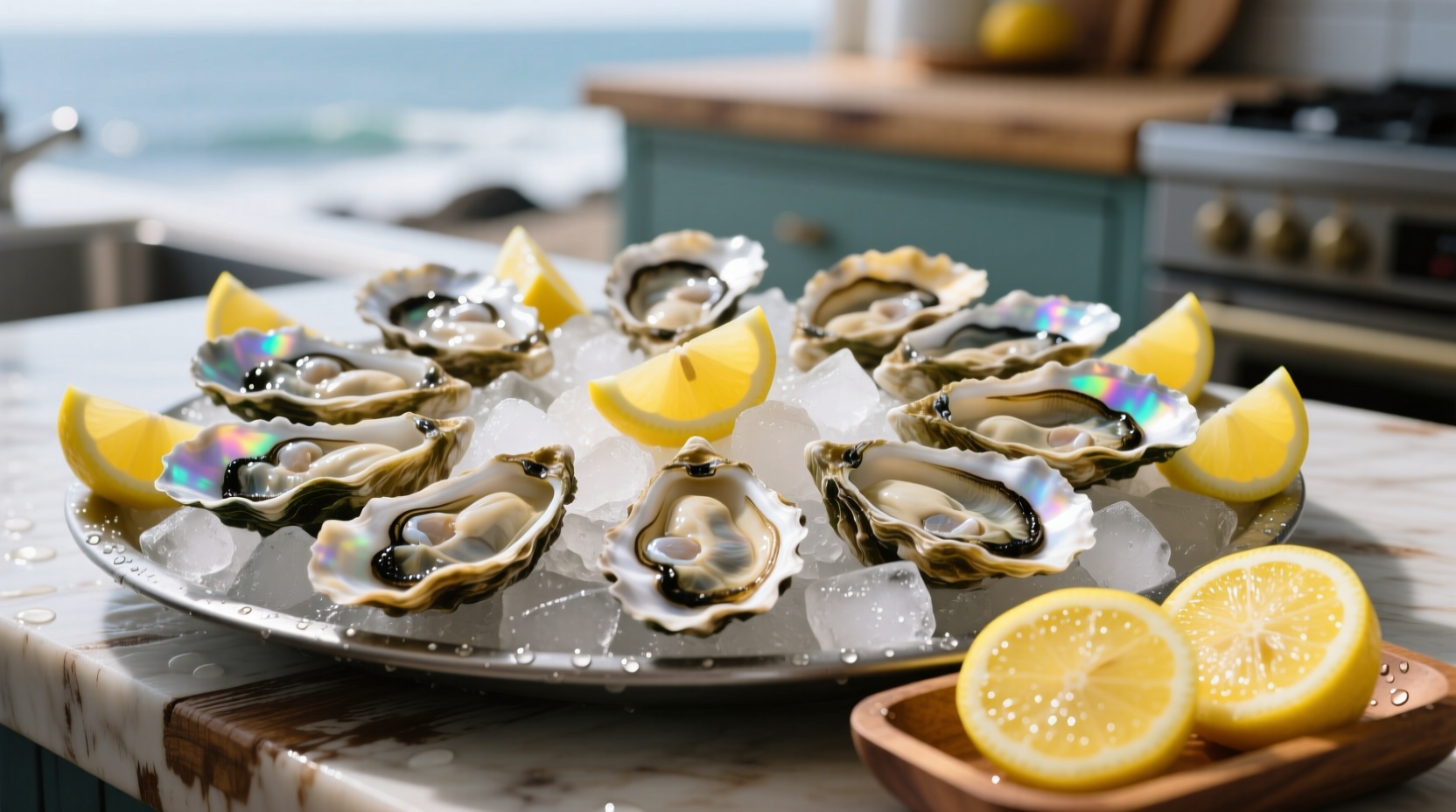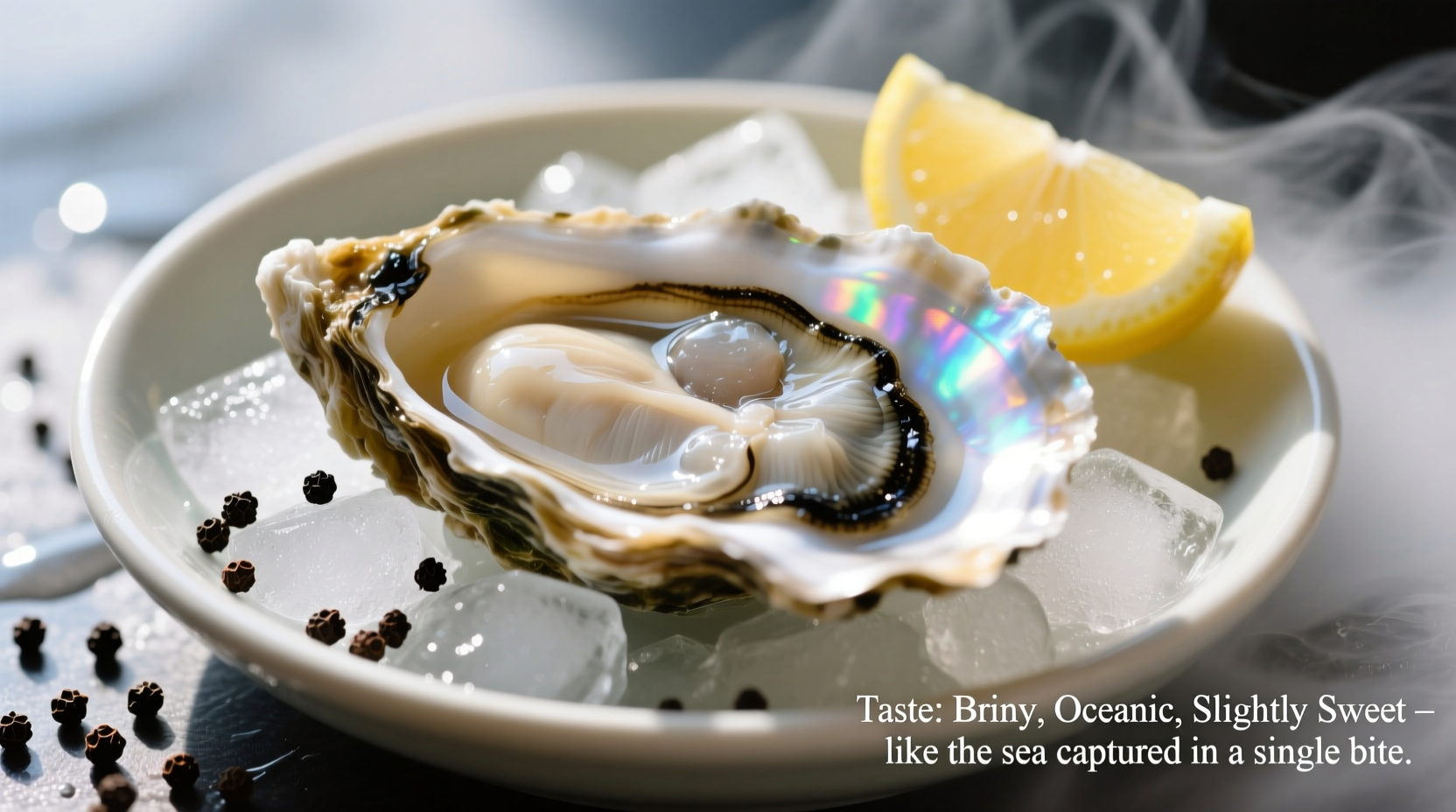Ever wondered what makes oysters such a coveted delicacy? Understanding what does a oyster taste like is essential whether you're a curious first-timer or looking to refine your palate. This guide breaks down the complex flavor profile of oysters, helping you appreciate why these bivalves have been celebrated for centuries.
The Core Flavor Profile: Beyond “Fishy”
Contrary to popular misconception, fresh oysters don't taste “fishy.” Instead, they deliver a sophisticated blend of flavors that reflect their marine environment. When you taste an oyster, you're experiencing the essence of its habitat through three primary elements:
- Brininess: The ocean's saltiness, varying from mild to intense based on salinity where they grew
- Sweetness: A subtle natural sugar note, more pronounced in certain varieties
- Finish: The lingering aftertaste that can range from clean and crisp to metallic or vegetal
According to NOAA's National Ocean Service, oysters filter up to 50 gallons of water daily, directly absorbing minerals and plankton from their environment. This explains why what does a pacific oyster taste like differs significantly from Atlantic varieties—each tells the story of its home waters.
Regional Taste Differences: East Coast vs. West Coast
The phrase “terroir of the sea” perfectly describes how oyster taste varies by location. Let's explore the key differences between major oyster-producing regions:
| Region | Texture | Primary Flavor Notes | Best For |
|---|---|---|---|
| East Coast (Atlantic) | Firm, crisp | Strong brine, cucumber, clean finish | First-time eaters seeking classic oyster experience |
| West Coast (Pacific) | Creamy, buttery | Sweet, melon, metallic finish | Those preferring milder, complex flavors |
| Gulf Coast | Soft, plump | Warm brine, tropical fruit | Hot weather consumption |
This regional variation demonstrates why culinary professionals emphasize that what does a blue point oyster taste like differs from a Kumamoto. Blue Points (East Coast) deliver that classic sharp brininess, while Kumamotos (West Coast) offer a sweeter, almost fruity profile with a smooth finish.

How Preparation Affects Oyster Flavor
Understanding what does a raw oyster taste like versus cooked versions is crucial. Raw oysters preserve their delicate flavor profile, allowing you to experience the pure essence of the sea. Cooking methods dramatically transform their taste:
- Grilled: Develops caramelized notes while maintaining brininess
- Fried: Creates a crispy exterior that contrasts with the tender interior
- Steamed: Softens brininess, enhancing natural sweetness
As noted by the Culinary Institute of America, raw consumption best showcases an oyster's true flavor profile. Their research shows that temperatures above 140°F begin to break down the delicate amino acids responsible for oysters' unique taste characteristics.
Your First Oyster: What to Expect
If you're wondering what does your first oyster taste like, prepare for a multi-sensory experience. Professional chefs recommend following these steps:
- Observe the liquor (the liquid inside the shell)—it should look clear, not cloudy
- Smell for fresh ocean air, not ammonia or sulfur
- Slurp the oyster in one motion to experience the full flavor journey
- Chew once or twice to release flavor compounds
Most first-timers experience an initial burst of saltiness followed by subtle sweet notes and a clean finish. The texture—often a concern for newcomers—is surprisingly pleasant: firm yet yielding, with a smooth glide across the palate.
Common Misconceptions About Oyster Taste
Several myths persist about oyster flavor that deserve clarification:
- “Oysters taste like metal”: While some varieties have metallic notes, this indicates freshness—zinc and iron from their diet contribute to this characteristic
- “All oysters are extremely salty”: Salinity varies dramatically; some West Coast varieties are notably sweet
- “The green stuff is unsafe”: The greenish hue in some oysters comes from chlorophyll in their diet and enhances flavor
How to Truly Taste an Oyster
To fully appreciate what does a oyster taste like, follow this professional tasting technique:
- Start with the narrow end of the shell to experience the full flavor progression
- Pair with a squeeze of lemon or dash of mignonette to enhance—not mask—natural flavors
- Follow with a crisp white wine or light beer to cleanse the palate
- Compare varieties side-by-side to notice subtle differences
According to a 2023 study published in the Journal of Sensory Studies, most consumers develop a preference for oysters after trying 3-5 different varieties. This suggests that initial reactions often change as palates adapt to appreciate the nuanced flavor profiles.
Seasonality and Oyster Flavor
While the “R” rule (only eat oysters in months with R) is outdated thanks to modern farming, seasonal changes still affect taste. During spawning season (spring/summer), oysters divert energy to reproduction, becoming milky and less firm. Fall and winter oysters typically offer the cleanest, most robust flavors that best answer the question what does a oyster taste like at its peak.
Practical Tips for Oyster Newcomers
If you're exploring what does a raw oyster taste like for the first time, consider these practical suggestions:
- Start with milder West Coast varieties like Kumamoto or Olympia
- Avoid overwhelming condiments that mask natural flavors
- Ask your fishmonger about the oyster's origin and flavor profile
- Consume within 24 hours of shucking for optimal freshness
Remember that freshness is paramount—a properly handled oyster should smell like a walk along the seashore, not fishy or sour. The University of Washington's School of Aquatic and Fishery Sciences confirms that proper handling preserves the delicate amino acid balance responsible for oysters' distinctive taste.











 浙公网安备
33010002000092号
浙公网安备
33010002000092号 浙B2-20120091-4
浙B2-20120091-4